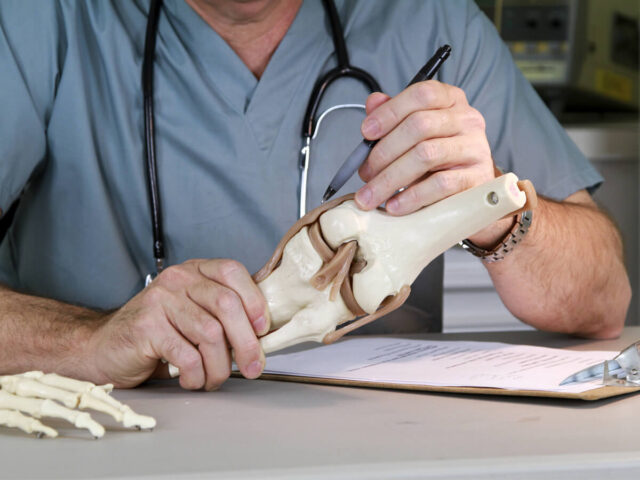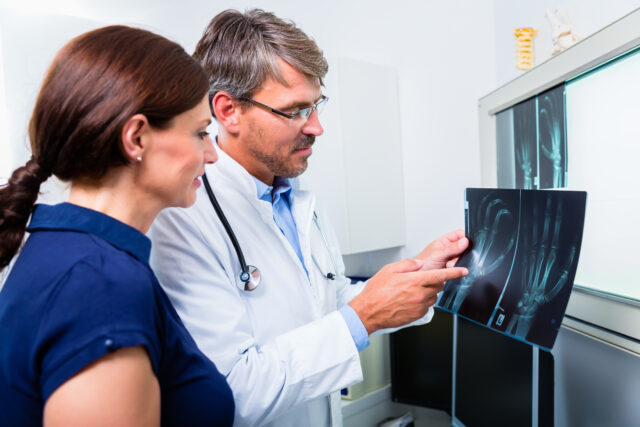
Orthopedic practices can embrace new business models to improve patients’ experiences and achieve success in the health industry. Patients are likely to recommend an orthopedic practice sensitive to their needs. An orthopedic EHR software can help improve practice profitability, performance, and patient outcomes. Here are tips to improve your orthopedic practice:
1. Use Guided Automation Solutions
Automating electronic medical records can help increase accuracy and productivity in your practice. With automated orthopedic EHR software, your staff can spend more of their time caring for patients instead of entering information manually. Personalized automation solutions are cloud-based applications that also show patients their healthcare journeys step by step. A user-friendly interface can deliver the needed information in small bites to avoid overwhelming the patient. Automated solutions can include features such as:
- Insurance information
- Pre- and postop instructions
- Follow-up capabilities
- Automatic reminders
These features make it easy for patients to check the required details independently. They can control their health journeys and connect with providers through multiple channels provided on the platform.
2. Train Your Staff

Train your staff to handle software and complex patient cases so they can be more confident when performing their roles. Make sure your employees have a base knowledge of orthopedic problems and billing so they can answer questions or refer patients to the right professional. You can train them in different ways, such as by providing them with tuition reimbursement for advanced learning. This can help increase their skills, adding more value to your practice.
3. Use Patient-reported Outcome Measures (PROMs)
Post-surgery pain is a fear for many patients. Creating pain management protocols can help you develop a clear action plan to increase patient preparedness by alleviating such concerns. PROMs refer to standardized surveys that help patients to share their observations on their postoperative experiences. PROMs can help to:
- Boost patient engagement
- Detect complications earlier
- Personalize treatment plans
Open and clear communication with patients before and after surgery can help them throughout their healthcare journey. Communication involves letting patients know what is normal, the level of pain to expect, and when to contact the doctor.
4. Upgrade Your Equipment
Use damage-free, updated equipment to provide quality service. Advanced equipment can expand your clientele and improve your patients’ experiences. The new equipment may help you get results faster, as it can be more user-friendly.
Upgrading your equipment can show your patients that you care about their well-being. Choose equipment that can help you perform minimally invasive surgery to help shorten hospital stays, reduce costs, and limit surgical trauma.
5. Make Use of Social Media

Social media can be a successful marketing strategy to improve your orthopedic practice. Social media platforms can give current and potential patients a glimpse into your practice and offer useful orthopedic tips.
You can share photos on social media to show patients an in-depth look at the staff they will work with. Offer tips that your followers can share with their connections. You can also use paid ad campaigns to attract new clients. Pay-per-click advertising can attract new clients. Placing ads with certain keywords and phrases in search results can help you reach the target audience you are interested in.
6. Add Informative Videos to Waiting Rooms
You can add informative videos to waiting rooms. Patients can view the videos as they wait for their appointments. Make these videos informative yet engaging to keep the patients’ attention. You can include the following:
- Patient testimonials or success stories
- A breakdown of your professional education
- Walk-throughs of orthopedic procedures
Creating videos with high sound and picture quality can help increase the authority the clips convey. These videos can help patients have confidence in your team. Patients may also be persuaded to book a follow-up appointment with your practice.
7. Find the Best Orthopedic EHR Software
To run a successful orthopedic practice, an orthopedic EHR solution can help. Choose one that is easy to use and won’t get in the way of your daily routine. Look for fully integrated practice management software that can help you optimize financial performance, enhance patient care, and reduce administrative burdens. Prioritize EHR software built specifically for orthopedic surgeons for the content to be functional and authentic for the success of your practice.
Investing in Continuing Education and Professional Development

Investing in continuing education and professional development is a critical aspect of improving your orthopedic practice. As a medical professional, it is essential to stay up-to-date with the latest advancements in your field, including emerging technologies, new treatment methods, and best practices.
Continuing education opportunities can take many forms, such as attending medical conferences, workshops, webinars, and online courses. These opportunities allow you to learn from experts in the field, collaborate with other professionals, and gain valuable insights into current trends and best practices.
Professional development is also an important aspect of investing in your practice. This may involve attending leadership and management training, improving your communication and interpersonal skills, or learning how to effectively manage your time and resources.
By investing in continuing education and professional development, you can improve the quality of care you provide to your patients, enhance your professional reputation, and stay competitive in the field. It can also help you stay motivated and engaged in your work, which can have a positive impact on your overall job satisfaction and well-being.
Moreover, investing in continuing education and professional development can help you stay current with regulatory changes and compliance requirements, which can reduce the risk of legal and financial consequences for your practice.
All in all, improving your orthopedic practice can be a challenging undertaking. However, with the right strategies and tools, you can ensure that your practice continues to stay competitive and profitable. By implementing these tips, you may be able to improve your practice and increase patient satisfaction.









